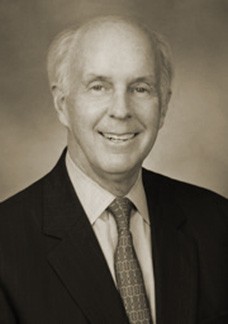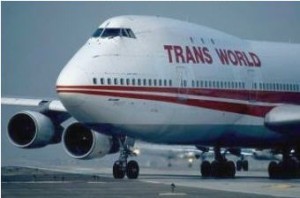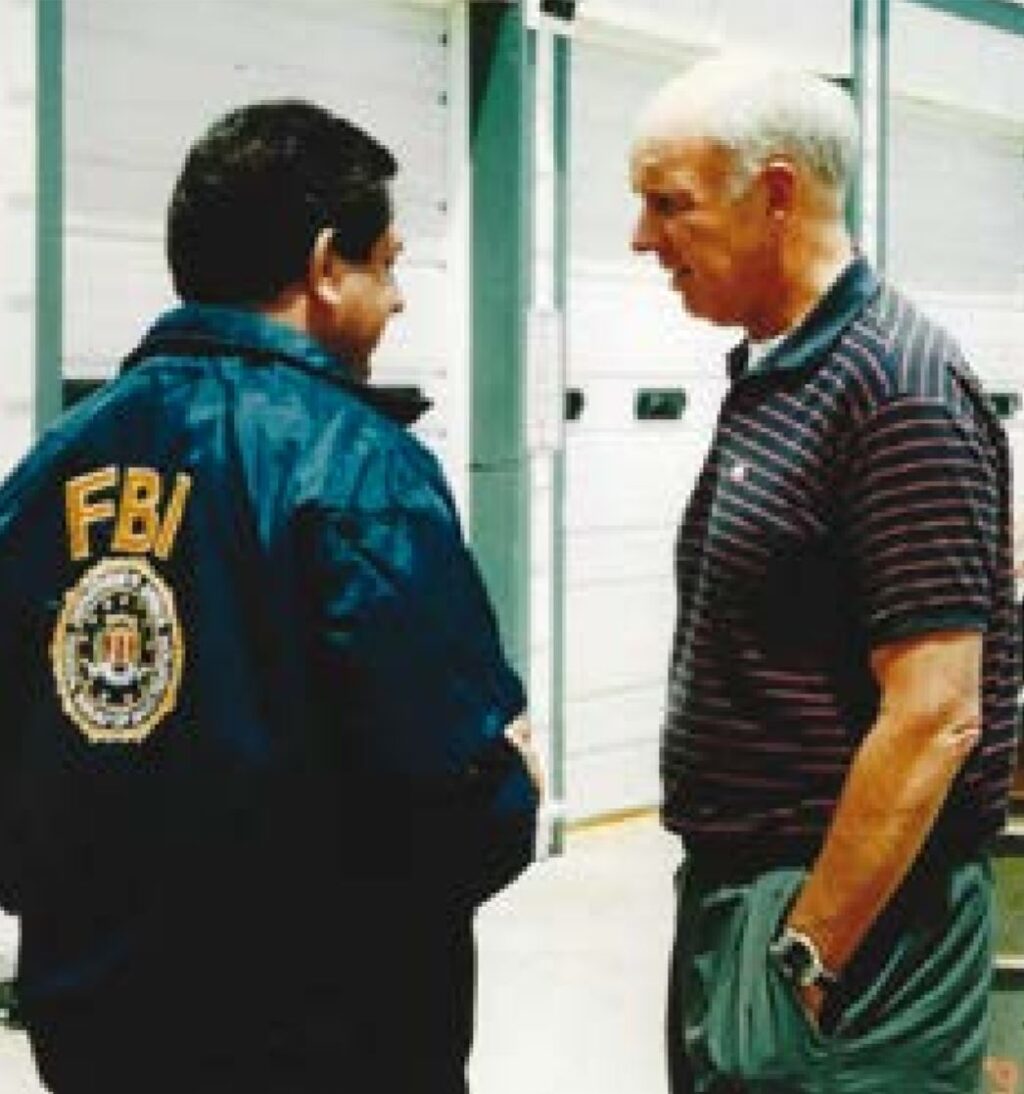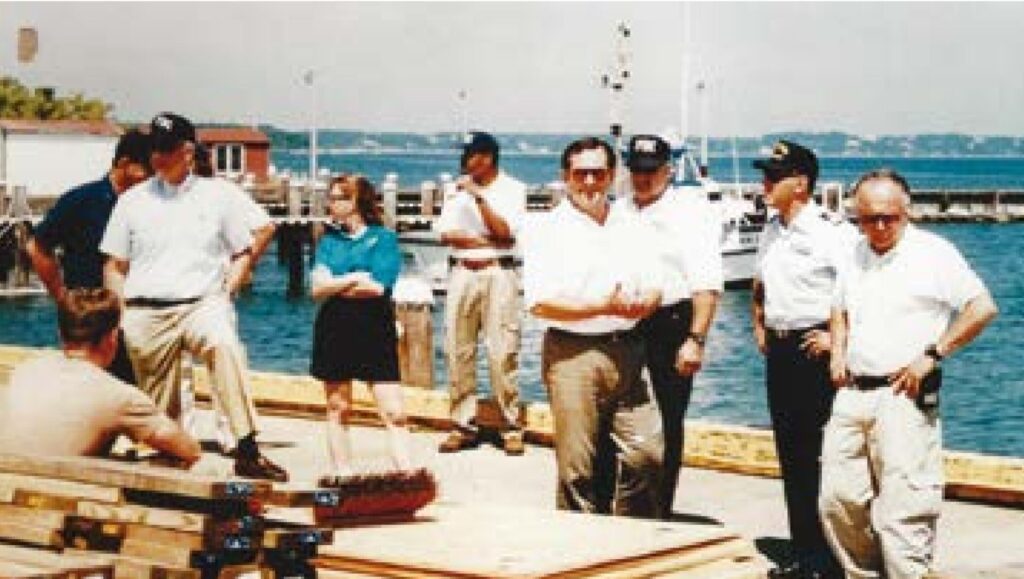
During the second half of the nineties, the patrician visage of Robert Talcott Francis dominated the news. And yet, when he died earlier this month at the age of 83, few outside of the aviation press published obituaries. This is not an obituary either, but my impressions of a thin slice of the man’s career when he was caught between feuding agencies and a multinational catastrophe.
In 1996, Francis, with his Oxford shirts and aristocratic manner, was the vice-chairman of the National Transportation Safety Board and as such he was the face of two high-casualty, high-profile airline crashes.
In May, he was in Miami when a Valuejet DC-9 caught fire shortly after takeoff and crashed into the Everglades killing all 110 onboard. (This crash led to the rare criminal prosecution of an aircraft maintenance company for its role in the disaster.)
Three months later a TWA Boeing 747 exploded shortly after takeoff from New York and plunged into the Atlantic with a loss of 230. Once again Francis was dispatched to the scene. The search to discover what triggered the blast on TWA Flight 800 was one of the most expansive, exhaustive and expensive accident probes carried out by the NTSB.
 Robert Francis’s role should have been the capstone of a career spent first traveling the globe on behalf of the Federal Aviation Administration where he represented the agency in Europe and Africa and prior to that, in South America and the Caribbean. Most government jobs aren’t so glamorous. And while there may be a lot of rough and tumble representing the FAA on a global stage, when it came to the TWA disaster, Francis would be up to his collar buttons in interagency fighting and interoffice politics.
Robert Francis’s role should have been the capstone of a career spent first traveling the globe on behalf of the Federal Aviation Administration where he represented the agency in Europe and Africa and prior to that, in South America and the Caribbean. Most government jobs aren’t so glamorous. And while there may be a lot of rough and tumble representing the FAA on a global stage, when it came to the TWA disaster, Francis would be up to his collar buttons in interagency fighting and interoffice politics.
As a journalist covering the crash for CNN, and later as the author of a book about the investigation, the TWA accident appeared to have brought Francis’s single term on the safety board to a somewhat unhappy end. Displeased with his performance in New York where many publicity-hungry politicians including then-New York Mayor Rudy Guiliani were using TWA 800 to steer news cameras their way, Francis’s final years on the safety board were punctuated by criticism and he was the subject of a few unflattering news stories leaked by NTSB insiders.
In Deadly Departure, I reported that Francis acted autonomously of the NTSB staff investigators from the moment he arrived in New York the morning after the July 17th crash. Leaving them behind, he set out with the deputy director of the Federal Bureau of Investigation, James Kallstrom, on a helicopter tour of the crash site, 2 and a half miles off the coast of Long Island.
 It was the start of a friendship that some described as an effective strategy by Kallstrom to mold the NTSB’s vice chairman to his way of thinking. And the FBI boss was convinced that the accident was the result of a criminal act. As he spent more and more time in Kallstrom’s company (even the two men’s chiefs of staff became friendly) Francis began missing important briefings from his own investigators that suggested a design failure on the aircraft. At the daily televised press conferences, NTSB investigators stood by as Francis allowed the crime theory to dominate.
It was the start of a friendship that some described as an effective strategy by Kallstrom to mold the NTSB’s vice chairman to his way of thinking. And the FBI boss was convinced that the accident was the result of a criminal act. As he spent more and more time in Kallstrom’s company (even the two men’s chiefs of staff became friendly) Francis began missing important briefings from his own investigators that suggested a design failure on the aircraft. At the daily televised press conferences, NTSB investigators stood by as Francis allowed the crime theory to dominate.

Francis, left with ball cap and Kallstrom, hatless, center
The role of the NTSB board member at an accident scene is to serve as the agency spokesperson, attending staff progress meetings and doling out information to the press and members of the families of accident victims. The board member is not an investigator nor does that person direct the work of investigators.
Kallstrom might have been calling the shots for the 15-hundred gumshoes fanning out across Long Island looking for a perpetrator of a crime, but Francis’s job was entirely different. He was supposed to be listening to what his own team was learning and then sharing the NTSB’s message with the press. One might not find that particularly significant but with each day, Francis’s unique way of doing his job was creating more irritation back at NTSB headquarters in Washington.

Jim Hall, NTSB Chairman in 1996
Ultimately the chairman, Jim Hall, flew to New York and had a sit down with Kallstrom. He handed the FBI boss the NTSB’s organizational chart which indicated the investigator in charge was the senior person on the scene, not Francis. “I want you to understand how it works,” Hall told Kallstrom.
From that point on, the NTSB’s position, that Flight 800 was probably not the result of an intentional act, began to gain ground. NTSB staff strengthened its message that a design flaw on the Boeing 747 might have triggered the deadly blast. By the end of the year, it had issued an emergency recommendation addressing that concern, though it would take a full 18 months for the FBI to publicly back away from its early position. That the FBI cowed the NTSB’s Francis in the early days, is in my view, one reason many people still believe there is a coverup of the true cause of the TWA 800 disaster.
That said, Francis’s diplomatic skills were put to great use when dealing with the families of Flight 800’s 230 victims. The flight from New York was headed to Paris and there were many French citizens on board. Francis was fluent in French and a Francophile with an understated and sympathetic demeanor. After an initially rocky start with the families, he was soon embraced by them and praised for his handling of their concerns.
TWA 800 wasn’t the first crash to expose the need for more sensitive and respectful treatment for the families of transportation disaster victims, but it was the one that prompted the Family Assistance Act which created a separate department within the NTSB specifically to handle family needs.
 In February 1997, the people who lost loved ones on Flight 800 gathered at a hangar in Long Island. A 90-foot section of the 747’s fuselage had been reassembled to assist the investigators in visualizing the forces at play that fateful night in July 1996.
In February 1997, the people who lost loved ones on Flight 800 gathered at a hangar in Long Island. A 90-foot section of the 747’s fuselage had been reassembled to assist the investigators in visualizing the forces at play that fateful night in July 1996.
But on this winter morning, it served a different role. With Robert Francis as their guide, the families walked through the aircraft, imagining the unthinkable. And while access was restricted, those who had brought flowers asked Francis to leave them on the seats of their loved ones. Francis complied describing it later by saying it was “tough stuff for everybody.” Tears were shed, including by Francis.
With or without published obituaries, I do not doubt that when word of the death of Robert Francis on April 17th reached the families of TWA 800 victims, tears were shed once again.
Head of FBI Probe into TWA Crash Dies Leaving Mixed Legacy

Author of The New York Times bestseller, The Crash Detectives, I am also a journalist, public speaker and broadcaster specializing in aviation and travel.









Nicely done, Christine.
I was a Coast Guard media liaison at the TWA crash site and I worked very closely with Mr. Francis. He was methodical, approachable, and an excellent coordinator of all the agencies and responders involved. I’m very sad to hear of his passing.
As the mother of one of the TWA 800 victims, the news of Bob’s passing was sad. You & I had a conversation in our hotel bar after that difficult tour of Calverton’s contents, mostly about other aviation incidents. You are correct, it wasn’t difficult just for us, but having spoken to Bob, Peter Goelz, Jim Hall, and other NTSB agents during that tour, I can attest to how it was truly difficult for them as well.